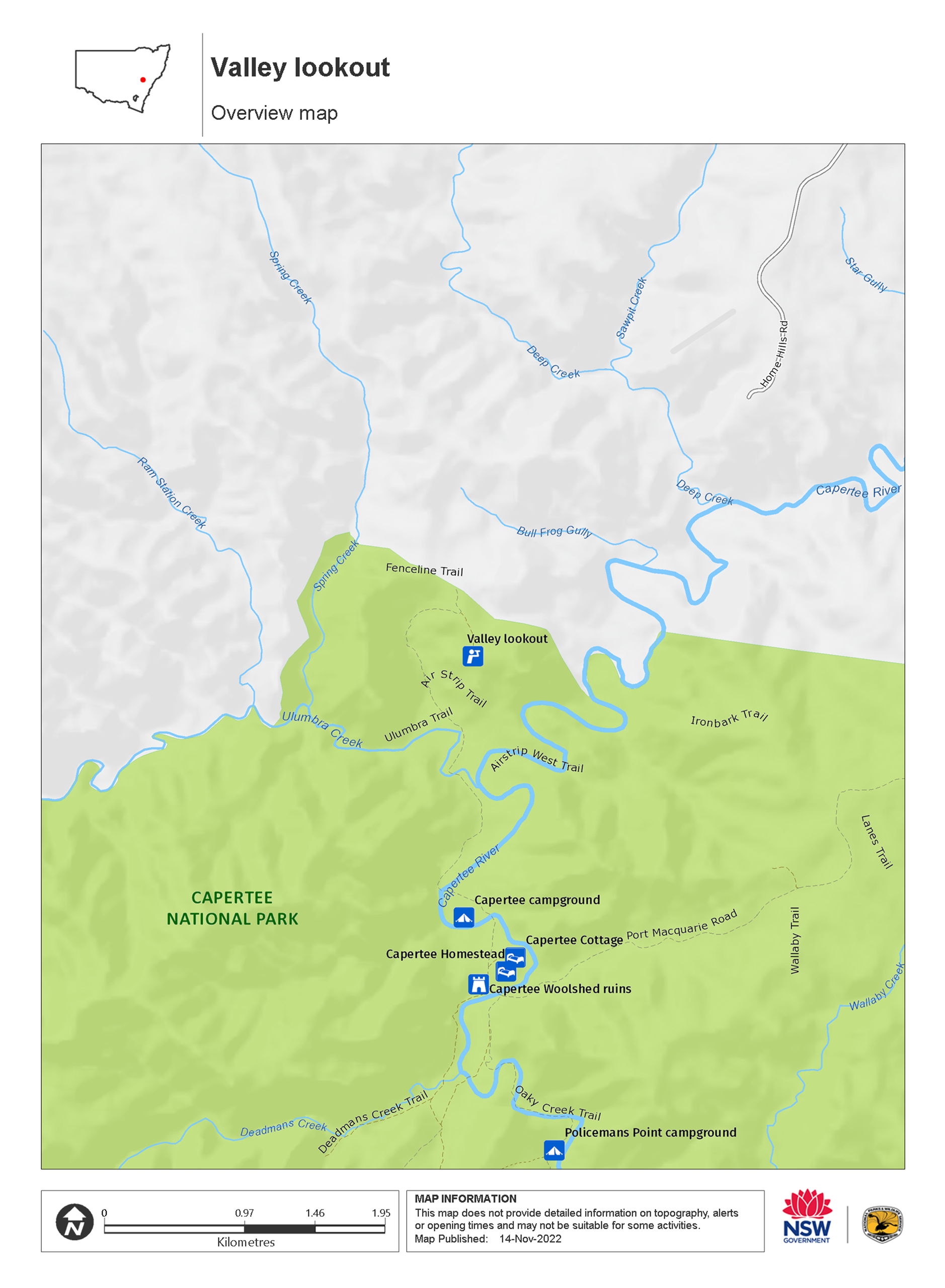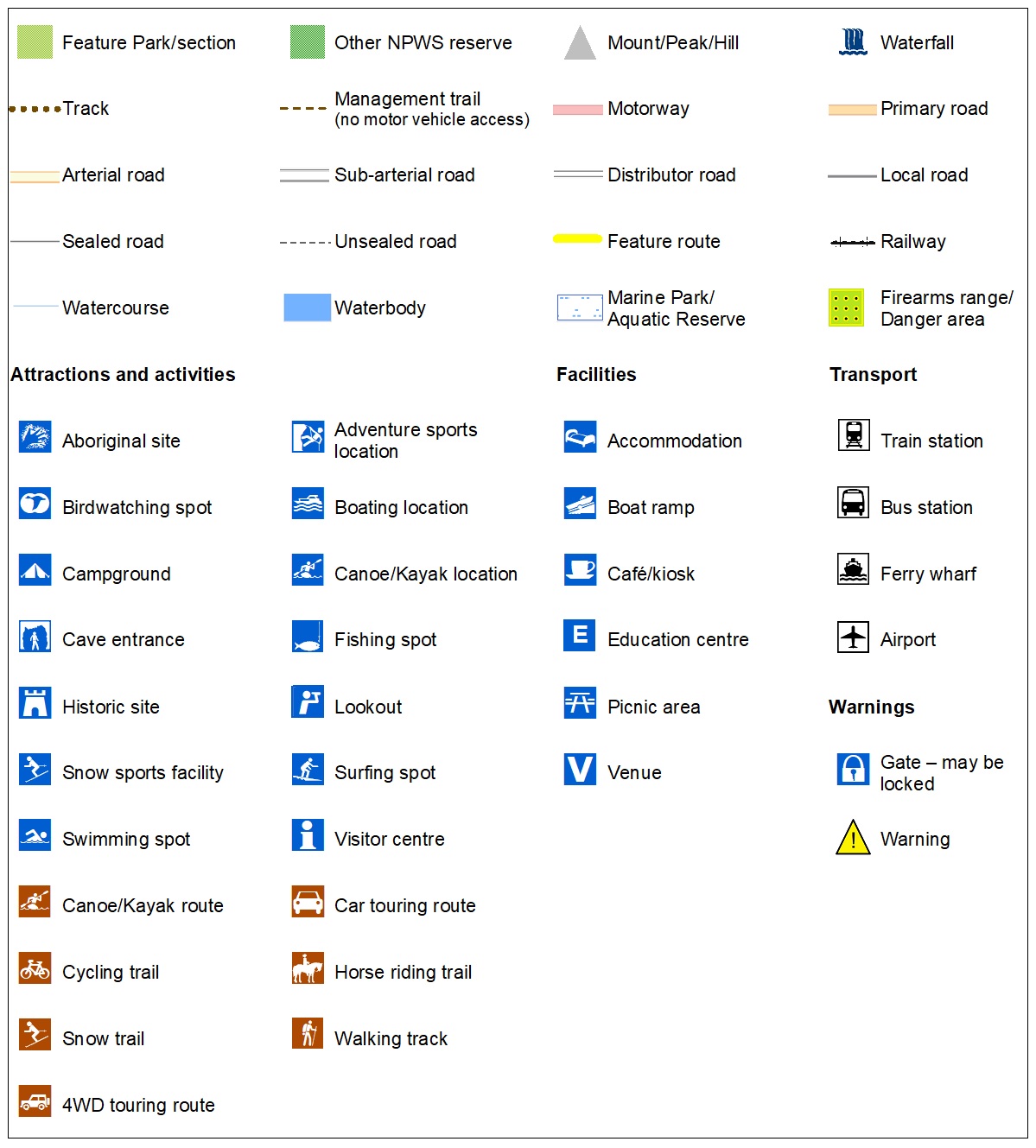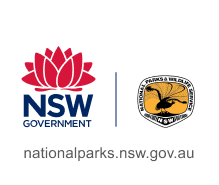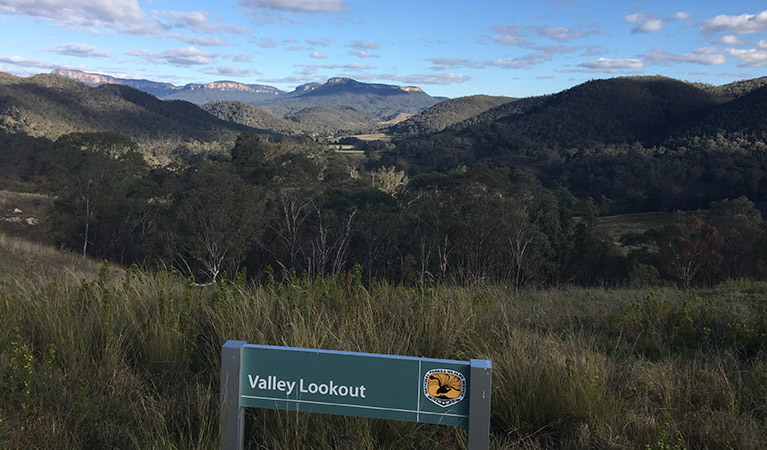Valley lookout
Capertee National Park
Overview
Relax with a picnic lunch at Valley lookout and enjoy dramatic views inside the world’s second largest canyon. It’s easily combined with a 4WD or camping getaway in Capertee National Park, near Rylstone.
- Type
- Lookouts
- Accessibility
- Medium
- Opening times
Access to Capertee National Park is via a locked gate. For the gate access code please contact the Mudgee office on weekdays, or Blue Mountains Heritage Centre on weekends, during office hours, before you set out.
- What to
bring - Hat, sunscreen, drinking water, sturdy shoes
- Please note
This park is in a remote area, so make sure you’re well prepared.
There’s no need to scramble over boulders or hike up cliffs to enjoy views of the Capertee Valley – the world’s second largest canyon. You can drive right up to Valley lookout, located inside the canyon within Capertee National Park, between Lithgow and Mudgee.
Pack a picnic lunch and relax on the grassy area at the lookout, which looks south across the Capertee River Valley to Blacks Corner and Genowlan Point. Looming above from the rolling farmland and forested hills are the red sandstone cliffs and pagodas that make this area such a geological marvel.
Keep your binoculars handy for birdwatching as there’s no better place in the world to spot critically endangered regent honeyeaters. Painted honeyeaters, Lewin’s honeyeaters and masked wood swallows are among the other birds seen here.
The lookout is a 5km drive or mountain bike ride from historic Capertee Homestead and Woolshed ruins. Stay overnight at the homestead or at charming Capertee Cottage. For something a little more rustic, pitch your tent by the tranquil river at Capertee campground.
It’s a great base for a few days of 4WD touring, bushwalking, mountain biking and birdwatching in Capertee and nearby Wollemi, Turon, and Gardens of Stone national parks.
Map

Map legend

Local alerts
For the latest updates on fires, closures and other alerts in this area, see https://www.nationalparks.nsw.gov.au/things-to-do/lookouts/valley-lookout/local-alerts
General enquiries
- National Parks Contact Centre
- 7am to 7pm daily
- 1300 072 757 (13000 PARKS) for the cost of a local call within Australia excluding mobiles
- parks.info@environment.nsw.gov.au
Park info
- in Capertee National Park in the Sydney and surrounds and Country NSW regions
Capertee National Park has a locked entry gate. If you're visiting during the day, get the gate code by calling Mudgee Office (weekdays) or Blue Mountains Heritage Centre (weekends).
Visitor info
All the practical information you need to know about Valley lookout.
Maps and downloads
Learn more
Valley lookout is in Capertee National Park. Here are just some of the reasons why this park is special:
Looking for things to do in Capertee?

There are great things to do when in Capertee. Enjoy fantastic bird watching any time of the year - the protected woodlands attract the threatened gang-gang and glossy black cockatoos, and Capertee Valley is one of only three known nesting areas for the endangered regent honeyeater. You'll find a range of options if you're looking for a place to stay, including Capertee Homestead, Cottage or campground. Bookings essential. You can also hike into remote Policemans Point campground.
- Capertee Woolshed ruins Capertee Woolshed ruins, in Capertee National Park, offer a view of the historic heritage of the area, with walking, paddling and birdwatching opportunities nearby.
- Valley lookout Relax with a picnic lunch at Valley lookout and enjoy dramatic views inside the world’s second largest canyon. It’s easily combined with a 4WD or camping getaway in Capertee National Park, near Rylstone.
Plant life abounds

The park is home to rare grey grevillea shrubs, which bloom with pink and red flowers in spring. This hardy, dense shrub is found nowhere else but Capertee Valley. Fertile river flats and surrounding slopes host an ecological community of majestic yellow box, blakelys red gum and white box, providing a vital habitat for wildlife and native birds.
- Capertee Woolshed ruins Capertee Woolshed ruins, in Capertee National Park, offer a view of the historic heritage of the area, with walking, paddling and birdwatching opportunities nearby.
- Valley lookout Relax with a picnic lunch at Valley lookout and enjoy dramatic views inside the world’s second largest canyon. It’s easily combined with a 4WD or camping getaway in Capertee National Park, near Rylstone.
Wiradjuri country

Capertee National Park is within the traditional lands of Wiradjuri People. The surrounding countryside contains evidence of Aboriginal occupation in the form of rock art, scarred trees and artefacts. Traditional food plants and old travel routes are also present within the park.
Plants and animals protected in this park
Animals
-

Regent honeyeater (Anthochaera phrygia)
The regent honeyeater is a critically endangered native bird. Once widespread across south-eastern Australia, only around 250 to 350 birds remain in the wild, making it at risk of extinction.
-

Swamp wallaby (Wallabia bicolor)
The swamp wallaby, also known as the black wallaby or black pademelon, lives in the dense understorey of rainforests, woodlands and dry sclerophyll forest along eastern Australia. This unique Australian macropod has a dark black-grey coat with a distinctive light-coloured cheek stripe.
-

Sugar glider (Petaurus breviceps)
The sugar glider is a tree-dwelling Australian native marsupial, found in tall eucalypt forests and woodlands along eastern NSW. The nocturnal sugar glider feeds on insects and birds, and satisfies its sweet tooth with nectar and pollens.
-

Bare-nosed wombat (Vombatus ursinus)
A large, squat marsupial, the Australian bare-nosed wombat is a burrowing mammal found in coastal forests and mountain ranges across NSW and Victoria. The only other remaining species of wombat in NSW, the endangered southern hairy-nosed wombat, was considered extinct until relatively recently.

